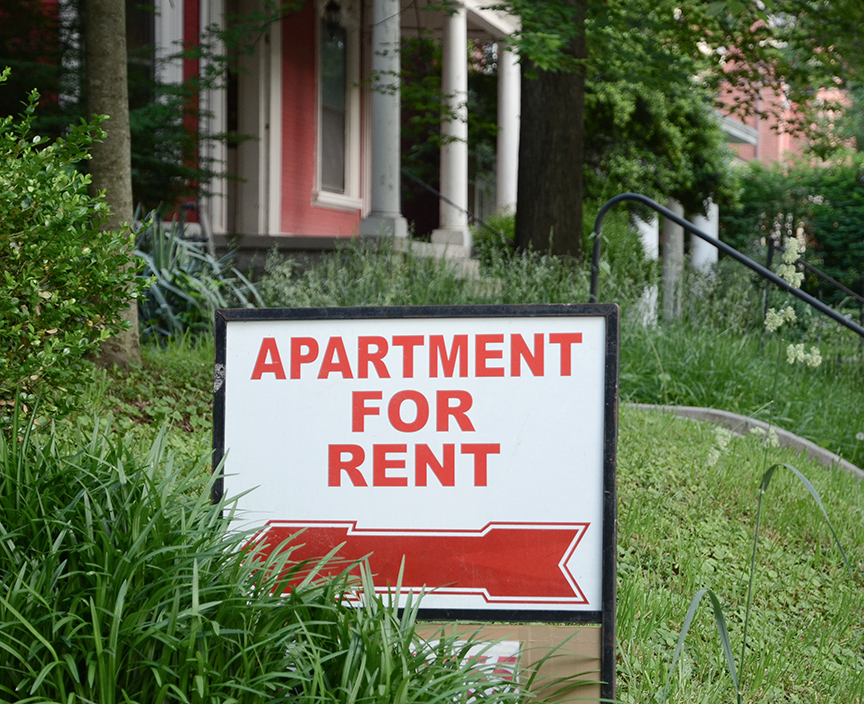

You are a landlord if you lease real property (buildings located on real estate) to a tenant. A lease may be oral or in writing. During the term of the lease, the tenant has the right to possession of and use of the property. When a lease is terminated, a landlord has certain rights and duties with respect to any security deposit paid by the tenant and eviction of the tenant if the lease termination was not by agreement. This summary is limited to residential leases and does not include commercial or business leases.
The Texas Property Code defines a security deposit as any advance of money, other than a rental application deposit, or an advance payment of rent, that is intended primarily to secure performance under a lease of a dwelling that has been entered into by a landlord and a tenant.
Normally, a landlord must refund a security deposit to the tenant on or before the 30th day after the date the tenant physically leaves the property. There are exceptions to this rule, however.
A landlord does not have to return a security deposit to a tenant until the tenant gives the landlord a written statement of the tenant’s forwarding address. Also, a landlord may deduct damages and charges for which the tenant is legally liable under the lease from the security deposit before returning it to the tenant. Charges incurred as a result of a tenant’s breaking the lease may also be deducted from the security deposit. Normal “wear and tear” may not be deducted from the security deposit, but damages in the form of physical abuse of the property may be deducted.
If you decide to retain all or part of a tenant’s security deposit, you must provide the tenant with a written description and itemized list of the deductions. If there is any amount left over after the deductions, it must be returned to the tenant along with the itemized list. It is presumed that a landlord has refunded all or part of a security deposit or sent an itemized statement in the proper time period after the tenant has left, if the statement or refund is mailed and post-marked within the proper time limit. That time limit is 30 days from the date of departure.
A requirement that a tenant give advance notice of surrender as a condition for refunding the security deposit is effective only if the requirement is underlined or is printed in conspicuous bold print in the lease.
It is important that you, as a landlord, carefully follow these guidelines regarding tenant security deposits. If you do not, a former tenant may be able to successfully sue you for bad faith retention of the security deposit under the Texas Property Code. Bad faith is presumed if a landlord retains a security deposit and does not provide a written description and itemized list of damages to a former tenant who does not owe rent. A landlord who in bad faith (bad faith is presumed if you do not act within 30 days) retains a security deposit without notice is liable for $100.00 plus three times the portion of the deposit wrongfully withheld, plus the tenant’s reasonable attorney’s fees. The tenant must pay his last months rent and not retain any portion or he will be liable to the landlord.
Judicial eviction is the landlord’s legal remedy for regaining physical possession of the leased premises. A lawsuit seeking eviction of a tenant is usually filed after the landlord or the tenant has terminated the lease and the tenant remains on the property. This lawsuit is called a suit for forcible detainer.
A tenancy may be terminated by agreement of the landlord and the tenant; upon notice of termination given by the landlord or the tenant after expiration of the lease term; by the landlord after a breach of the lease by the tenant; and for other reasons. A landlord should give written notice of termination or notice to vacate to the tenant in accordance with the lease. If there is no written lease between the parties, the general rule is three (3) days notice for non-payment of rent and thirty (30) days notice for any other violation. Notice shall be given in person or by mail at the premises in question. The notice period is calculated from the day on which notice is delivered. The notice to vacate must not be conditional.
The suit for eviction should be filed in the justice court in the county and precinct where the leased property is located. The filing fee ranges from $55.00 to $65.00 and should be paid to the clerk of the justice court where the suit is filed. The clerk of the court will provide you with appropriate forms for filing suit. In filling out your complaint either type or print in ink. You may name one tenant or name all tenants, but if you name all tenants they will each have to be served with citation which will add the extra $10.00 charge per person to your suit. These charges may vary from court to court and a call to the appropriate court will give you the exact amount. If the constable is unable to locate a tenant or member of the household over 16, then service may be effected by leaving the citation on or inside the premises in accordance with Rule 742a. In a suit filed in justice court in which the landlord files a sworn statement seeking judgment against a tenant for possession of the premises and unpaid rent, personal service on the tenant or service on the tenant under Rule 742a, Texas Rules of Civil Procedure, is procedurally sufficient to support a default judgment for possession of the premises and unpaid rent. A landlord may recover unpaid rent regardless of whether the tenant vacated the premises after the date the landlord filed the sworn statement and before the date the court renders judgment. In a suit to recover possession of the premises, whether or not unpaid rent is claimed, the citation required by Rule 739, Texas Rules of Civil Procedure, must include the following notice to the defendant:
FAILURE TO APPEAR FOR TRIAL MAY RESULT IN A DEFAULT JUDGMENT BEING ENTERED AGAINST YOU.
There are several useful rules that may be followed in completing the petition form(s). You are the plaintiff in the lawsuit. You should state the tenant’s full address, including apartment number (if applicable) and zip code. If suing for nonpayment of rent, state the date the lease was signed or the move-in date. Give the dates and amounts of rent due to the date of filing. If you are suing for holdover or some other breach of the lease, state your reason. Amounts sued for must total less than $10,000.00 for the suit to remain in justice court.
Once the forcible detainer suit has been filed, the constable or other authorized official will serve documents upon the tenant notifying him of the nature of the suit and of the time and place of the answer and possible trial. Service will normally be by delivery of the documents to the tenant in person. If a number of attempts to deliver the documents in person do not meet with success, other types of service can be used with court approval.
The trial or hearing on the forcible detainer suit will be heard by the judge, but the tenant does have the right to request a jury. Proceedings are informal and you do not need an attorney to represent you. The court will require you to show that you have the right to possession of the property and the basis for the eviction. If the trial is a judge trial rather than a jury trial, the judge will listen to both sides and make a ruling.
The court will usually inform both parties that the losing party has five (5) days in which to appeal the justice court decision to county court. A landlord who prevails in an eviction suit should wait five days before taking any additional action to remove the tenant. If the tenant fails to move out or file an appeal within five (5) days of the judgment for possession you may obtain a writ of possession from the court on the 6th day. The writ of possession orders a constable or other officer to deliver possession of the property to the landlord. You will have to pay an additional fee to obtain the writ of possession.
Eviction (Forcible Detainer) and Writs of Possession can be usually filed between 8:00 a.m. and 4:30 p.m. Monday through Friday in the justices’ court.
The complaint form is fairly self-explanatory but note that if your basis for suit is other than non-payment of rent, or holding over, then you must state concisely your other grounds.
If you are suing for rent (not in a civil suit, but in a suit for eviction) the amount must be $10,000.00 or less.
NOTE, you must sign your complaint before the clerk of the justice court, or before a notary public.
A residential landlord has a duty under Texas Property Code Chapter 92, Subchapter B to repair or remedy a condition materially affecting the physical health or safety of an ordinary tenant. If a landlord fails to do so after the tenant has given the written notices required by the property code, the tenant can bring suit in justice court against the landlord.
The plaintiff/tenant must include a Justice Court Civil Case Information Sheet with his petition. These are available from the court clerk.
The petition must be in writing and must include the following information:
The tenant must provide the court with copies of the petition and any attachment to the petition for service on the landlord.
The judge will issue citation to the landlord commanding him to appear not less than 10 days nor more than 21 days after the petition was filed. The appearance date is the trial date.
If the tenant appears at trial and the landlord has been served but fails to appear, the judge may proceed to hear the evidence and render judgment against the landlord in accordance with the evidence. If the tenant fails to appear, the judge may dismiss the lawsuit.
Any party who prevails in a lawsuit brought under these rules may recover the party’s court costs and reasonable attorney’s fees as allowed by law.
The judgment may:
(a) Order the landlord to take reasonable action to repair or remedy the condition
(b) Order a reduction in the tenant’s rent, from the date of the first repair notice, in proportion to the reduced rental value resulting from the condition until the condition is repaired and remedied
(c) Award a civil penalty of one month’s rent plus $500
(d) Award the tenant’s actual damages
(e) Award courts costs and attorney’s fees
If the judge orders the landlord to repair or remedy a condition, the judgment must include in reasonable detail the action the landlord must take to repair or remedy the condition and the date when the repair or remedy must be completed.
If the judge orders a reduction in the tenant’s rent, the judgment must state:
(a) The amount of the rent the tenant must pay, if any
(b) The frequency with which the tenant must pay the rent
(c) The condition justifying the reduction of rent
(d) The effective date of the order reducing rent
(e) That the order reducing rent will terminate on the date the condition is repaired or remedied
(f) That on the date the condition is remedied, the landlord must give the tenant written notice, served in accordance with Rule 501.4, that the condition justifying the reduction in rent has been repaired or remedied and the rent will revert to the rent amount specified in the lease
The judgment will be served on the landlord. Failure of the landlord to comply is grounds for citing the landlord with contempt of court under Section 21.002 of the Texas Government Code.
Counterclaims and the joinder of suits against third parties are not permitted in suits under these rules.
Either party may appeal the justice court decision within 21 days from the date the judge signs the order.
If a judgment for the landlord for possession of the residential property becomes final, any order to repair or remedy a condition is vacated and unenforceable.
Follow Us
The information you obtain on this website is not, nor is it intended to be, legal advice. Consult an attorney for advice regarding your individual situation. We invite you to contact us and welcome your calls, letters and email. Contacting us does not create an attorney-client relationship. Please do not send any confidential information to us until such time as an attorney-client relationship has been established.
